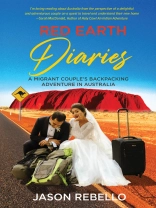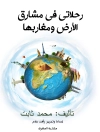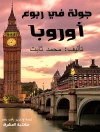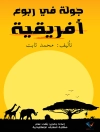A one-way ticket to Australia…two months of travel…and a shoestring budget.
In Red Earth Diaries we meet Jason and Ambika, a newlywed couple who migrated to Australia with the hope of a fresh start. However, unlike most migrants, they made a bold decision to postpone their settlement plans, throw caution to the wind and backpack in Australia on a shoestring budget.
Their intention was to learn about the country and its people first-hand … a land they would someday call home.
Swimming with sharks, cuddling cute koalas, chartering private helicopters, venturing deep into ancient rainforests, and getting to know plenty of locals – the couple had incredible experiences in this stunning country.
Their travel story is interwoven with snippets of history and provides the reader with a glimpse of Australia as viewed through the eyes of newly arrived migrants.
Join Jason and Ambika on their spectacular journey of discovery.
Red Earth Diaries is founded on four primary pillars: a migrant’s journal, a travelogue, a delve into Australian history, and an inspirational tale. The central message of the book is for everyone to chase their dreams – however distant and impossible they may seem.
The central message of the book is for everyone to chase their dreams – however distant and impossible they may seem. Moving to Australia has been one seemingly impossible goal the author had set decades ago, and he likewise urges the reader to shed all reservations and to dream the wildest dreams possible.
The Preface of Red Earth Diaries is called Dreamtime, and in it, the author describes the evolution of his journey to this strange and peculiar wonderland. As a travelogue, the book harkens to all travellers as well as migrants who are already in Australia or who are thinking of making the move to this beautiful country.
The book also contains stories of local Australians the couple met along the way. In it you will meet, amongst others – Helen, a 10-Pound-pom; Rowland Mosbergen, a sprightly man in his eighties who survived the horrors of WWII in a remote jungle in Bahau; Rafael and Nadia and their three kids based in Research, Victoria; Ranjit, a practising surgeon and his wife who are based in Kew, Melbourne. The travelogue aims to deliver an essential message to all migrants in Australia – to not take this country for granted and to try to understand and embrace its culture first.
Some key personalities mentioned:Paul Hogan, Ned Kelly, Steve Irwin, Captain Cook, Burley Griffin, Gregory Blaxland, Jorn Utzon, Eddie Mabo
Some key historical events described:
The Endeavour striking the reef, finding a passage through the Blue Mountains, the discovery of gold, the naming of Sunshine Coast, the birth of Canberra as the nation’s capital, the iconic rail journeys in Australia, WWI and WWII, Early colonization, Blackbirding, construction of Opera House.
Charity Donation:Five per cent of all profits from the sale of this book in the first year of publication will be donated to the Red Cross towards the 2019-20 bushfire crisis management (www.redcross.org.au) and a further five per cent will be also be given to aged care in India through Help Age India (www.helpageindia.org).
Inhaltsverzeichnis
PREFACE: Dreamtime
CHAPTER 1: The Master Plan
CHAPTER 2: Lift Off
CHAPTER 3: Two Backpacks and a Business Suit
CHAPTER 4: A River Runs Through It
CHAPTER 5: Of Strange Beasts and Distant Lands
CHAPTER 6: Heads we go North!
CHAPTER 7: Sea Creatures
CHAPTER 8: Romancing the Railways
CHAPTER 9: Heart of the Reef
CHAPTER 10: Flight of Fancy
CHAPTER 11: Ancient Land and Old Culture
CHAPTER 12: Inside a Picture Postcard
CHAPTER 13: Where the Rainforest meets the Reef
CHAPTER 14: Shipwrecked
CHAPTER 15: Daal, Roti and War Stories
CHAPTER 16: Adieu to Queensland
CHAPTER 17: The Gold Rush
CHAPTER 18: The Grand Dame
CHAPTER 19: Twelve Apostles
CHAPTER 20: The Valley of Fine Wines
CHAPTER 21: Seat of Power
CHAPTER 22: Dark Caves and New Discoveries
CHAPTER 23: Into the Blue
CHAPTER 24: Emerald City
CHAPTER 25: Showers of Blessings
EPILOGUE: Land of the Red Dog
BIBLIOGRAPHY
ACKNOWLEDGEMENTS












